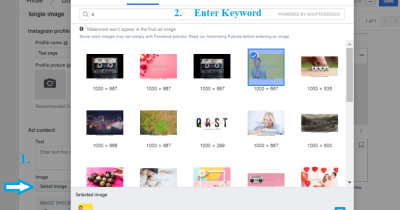Thinking about turning your photography hobby into a source of income? Shutterstock is one of the biggest platforms where photographers can sell their images to a global audience. But how do you make sure your photos stand out and actually sell? It’s not just about taking good pictures — it’s about understanding what buyers are looking for and how to present your work so it gets noticed. In this post, we’ll explore some helpful tips and insights to help you create photos that sell well on Shutterstock and turn your passion into profit!
Understanding What Shutterstock Looks for in Stock Photos

Before you start snapping away, it’s essential to know what Shutterstock considers when choosing images for their marketplace. They’re looking for photos that are not only high quality but also relevant and versatile. Here are some key aspects to keep in mind:
- High Resolution and Quality: Shutterstock prefers images that are sharp, clear, and free of noise or pixelation. Use a good camera and proper lighting to ensure professional results.
- Commercial Viability: Photos should have broad appeal and be useful for various projects. Think about what businesses, marketers, and designers might need — like lifestyle shots, business themes, or natural landscapes.
- Unique and Authentic Content: While popular themes are important, originality helps your photos stand out. Candid shots, diverse subjects, and fresh perspectives can give you an edge.
- Proper Metadata: Accurate, detailed titles, descriptions, and keywords are crucial. They help your images get found by the right buyers. Be specific and think about what someone searching for your photo might type.
- Model and Property Releases: If your photo includes recognizable people or private property, make sure you have the necessary releases. Shutterstock enforces this to ensure images are legally sellable.
Additionally, Shutterstock favors images that are free of watermarks, logos, or branding, as they want versatile photos that can be used in multiple contexts. Staying updated with current trends and popular themes can also give you a better shot at success. Remember, the goal is to create images that are not only technically perfect but also relevant and in demand, increasing your chances of making sales and building a steady income stream.
Tips for Capturing High-Quality and Marketable Images

When it comes to selling photos on Shutterstock, quality is king. You want your images to stand out in a crowded marketplace, and that means paying attention to the details that make a photo both eye-catching and professional. Here are some practical tips to help you capture images that will sell well:
- Use a Good Camera and Lens: While you don’t need the most expensive gear, investing in a decent DSLR or mirrorless camera can make a big difference. A sharp, high-resolution image is more appealing to buyers. Pair it with a versatile lens—ideally a prime lens with a wide aperture—to get crisp focus and nice background blur.
- Focus on Composition: Think about the rule of thirds, leading lines, and framing. A well-composed photo naturally draws the viewer’s eye and looks more professional. Don’t be afraid to experiment with different angles and perspectives to find the most engaging shot.
- Pay Attention to Lighting: Natural light is your friend. Shoot during the golden hours—early morning or late afternoon—when the light is soft and warm. If shooting indoors, use diffused light sources to avoid harsh shadows and highlights.
- Keep the Background Clean and Simple: Cluttered backgrounds can distract from the main subject. Aim for clean, uncluttered backgrounds that complement your subject and make it pop.
- Focus on the Details: Small details can elevate your photos. Make sure your images are sharp, well-exposed, and free of noise or distractions. Use editing tools to enhance colors and contrast subtly without overdoing it.
- Capture a Variety of Shots: Shoot multiple variations of the same scene—different angles, lighting conditions, or focal points. This gives buyers more options and increases your chances of a sale.
- Stay Current with Trends: Keep an eye on what’s popular on Shutterstock and in the stock photo market. Incorporate trending themes, colors, or styles into your shoots to increase marketability.
Remember, the key is to produce images that look authentic and resonate with your target audience. Practice, experiment, and always keep quality at the forefront. The better your photos look, the more likely they are to sell!
Common Mistakes to Avoid When Shooting Stock Photos
Even seasoned photographers can fall into some common traps when creating stock images. Recognizing these mistakes early can save you time, effort, and frustration—and help you produce images that actually sell. Let’s go over some of the most frequent pitfalls and how to avoid them:
- Over-Editing or Over-Filtering: While editing is essential, going overboard with filters, excessive saturation, or heavy retouching can make your images look unnatural. Aim for a balanced, clean look that enhances the photo without making it obvious that it’s been heavily edited.
- Including Watermarks or Logos: Never submit photos with watermarks or logos. It’s a quick way to get rejected and can annoy buyers. Always remove any branding or distracting elements from your images before uploading.
- Ignoring Model Releases or Property Rights: If your photos feature recognizable people or private property, ensure you have the necessary model releases or property rights documentation. Shutterstock can reject images that lack proper permissions, which wastes your time.
- Using Low-Resolution or Poor-Quality Files: Upload only high-resolution, sharp images. Blurry or pixelated photos won’t make it past the review process and won’t look appealing to buyers.
- Failing to Tag Correctly: Proper metadata is crucial. Use accurate, descriptive titles, keywords, and categories. This helps your images get found in searches and increases your chances of being sold.
- Taking Cliché or Overused Shots: Stock photography is competitive, so avoid the obvious or overly generic images. Instead, aim for fresh, unique perspectives or themes that haven’t been overdone.
- Not Considering Market Needs: Upload images that meet current demand. For example, if there’s a trend for diverse workplaces or eco-friendly themes, tailor some of your shoots accordingly.
By being mindful of these common mistakes, you’ll make the submission process smoother and increase your chances of success on Shutterstock. Remember, quality, relevance, and professionalism are your best tools for creating stock photos that sell well. Keep learning, stay inspired, and never settle for mediocrity!
Editing and Enhancing Your Photos for Better Sales
Once you’ve captured those perfect shots, the next step is to give them a little extra polish. Editing and enhancing your photos can make a huge difference in how they stand out on Shutterstock and catch the eye of potential buyers. But don’t worry—there’s no need to be a professional photographer or Photoshop wizard. Simple adjustments can go a long way!
Start with basic corrections: crop images to improve composition, straighten horizons, and remove any distractions from the background. Brightness, contrast, and saturation tweaks can help make your images more vibrant and appealing. Remember, the goal is to enhance the image, not to make it look unnatural.
Here are some common editing tips to boost your photo sales:
- Remove imperfections: Use tools like spot healing or clone stamp to eliminate dust spots, blemishes, or unwanted objects.
- Adjust color balance: Correct color casts to ensure your images look true-to-life.
- Sharpen details: Enhance the clarity of key elements to make your photos crisp and professional-looking.
- Use filters sparingly: While filters can add a creative touch, overdoing them might make your images less versatile for buyers.
If you’re not comfortable with complex editing software, free options like GIMP or online editors such as Canva can do the trick. For more advanced editing, Adobe Lightroom or Photoshop offer extensive tools to refine your images further.
Remember, the goal is to make your photos look natural, appealing, and ready for commercial use. A well-edited photo can significantly increase its chances of selling, as buyers often prefer images that are clean, professional, and high-quality. So, take your time to enhance your images thoughtfully—you might be surprised how a few tweaks can boost your sales!
Keywords and Metadata Optimization for Your Shutterstock Uploads
Think of keywords and metadata as the secret code that helps your photos get found. When uploading to Shutterstock, optimizing this information is crucial for visibility and sales. If potential buyers can’t find your images, they won’t be able to purchase them, no matter how beautiful or high-quality they are.
Start with a clear, descriptive title that accurately reflects the content of your image. Use simple language and include relevant keywords. For example, instead of “Beautiful scenery,” try “Majestic mountain landscape with clear blue sky.”
Next, focus on the keywords—these are the most important. Choose words that accurately describe the main subjects, setting, colors, mood, and usage context. Think about what a buyer might search for. For instance, if your photo features a business meeting, keywords could include business, teamwork, office, professionals, conference.
Here are some tips for effective keywording:
- Be specific: More precise keywords help your images appear in targeted searches.
- Use all available slots: Shutterstock allows multiple keywords, so take advantage of this space to maximize discoverability.
- Avoid spammy keywords: Repeating irrelevant keywords or stuffing keywords can harm your image’s visibility.
- Include synonyms and related terms: Cover different search phrases that buyers might use.
In addition to keywords, fill out the description with a concise, informative paragraph that elaborates on the image content. This helps the Shutterstock algorithm understand your image better and improves its chances of showing up in relevant searches.
Finally, remember to review your keywords and metadata periodically. Trends change, and adjusting your tags can help keep your images relevant and easily discoverable.
By investing time in proper keywording and metadata optimization, you’re essentially making sure your photos get the visibility they deserve. Well-optimized images are more likely to be seen, downloaded, and ultimately, sold. So, take the extra few minutes to do it right—you’ll thank yourself with higher sales and more exposure!
Promoting Your Stock Photos to Increase Visibility and Sales
Once you’ve uploaded your stunning images to Shutterstock, the journey doesn’t end there. In fact, promotion is a big part of getting your photos in front of more eyes—and ultimately boosting your sales. Think of it like throwing a party for your photos; the more people who see them, the better your chances of making sales. So, how can you effectively promote your stock photos? Here are some friendly tips to get you started.
Share on Your Social Media Channels: Use platforms like Instagram, Twitter, Facebook, and LinkedIn to showcase your best shots. Create a dedicated account or page for your photography work and post regularly. Use relevant hashtags to reach a broader audience—think along the lines of StockPhotography, PhotosForSale, or niche-specific tags related to your images.
Build a Personal Portfolio Website: Having your own website or online portfolio is a fantastic way to display your work professionally. Include a link to your Shutterstock portfolio and encourage visitors to browse and purchase. You can also write blog posts or behind-the-scenes stories that add personality to your work and attract more visitors.
Engage with Photography Communities: Join online groups, forums, or communities dedicated to photography and stock images. Platforms like Flickr, 500px, or even dedicated Facebook groups allow you to share your work, get feedback, and connect with potential buyers or collaborators.
Leverage Email Newsletters: Build an email list of interested followers or clients. Send regular updates showcasing new photos, special promotions, or tips related to photography. This keeps your audience engaged and more likely to purchase your images when they see something they like.
Collaborate with Influencers or Brands: Partnering with bloggers, influencers, or brands can amplify your reach. If your images fit a specific niche, reaching out to relevant online personalities or companies can lead to feature opportunities that drive traffic to your Shutterstock portfolio.
Remember, promoting your work is an ongoing process. The more consistent and genuine you are in sharing your photos and engaging with your audience, the more visibility you’ll gain. And with increased exposure, your chances of making sales go up!
Conclusion and Final Tips for Success on Shutterstock
Wrapping up, succeeding on Shutterstock isn’t just about uploading pretty pictures—it’s about understanding the market, staying consistent, and actively promoting your work. Think of it as building a brand around your photography and making sure it gets seen by the right people. Here are some final tips to help you stay on track and maximize your earnings:
- Keep Learning and Improving: Stay updated on photography trends, Shutterstock guidelines, and SEO best practices. The more you refine your craft and adapt to market demands, the better your chances of success.
- Be Patient and Persistent: Stock photography is a long-term game. Some images might sell quickly, while others take time. Don’t get discouraged—keep uploading new content and promoting your portfolio.
- Focus on Quality Over Quantity: While uploading regularly is good, prioritize high-quality, well-composed images. Clear, sharp, and relevant photos tend to perform better.
- Use Relevant Keywords and Descriptions: Proper metadata helps your images appear in searches. Be specific, honest, and strategic with your keywords to attract the right buyers.
- Analyze Your Performance: Pay attention to which images sell best and why. Use Shutterstock’s analytics tools to understand trends and guide your future uploads.
- Stay Consistent and Passionate: The most successful contributors are those who enjoy the process. Keep experimenting, exploring new styles, and sharing your unique perspective.
Remember, success on Shutterstock is a marathon, not a sprint. With dedication, a bit of strategic promotion, and continuous improvement, you’ll build a thriving portfolio that sells well and brings your creative vision to a global audience. Happy shooting and selling!


